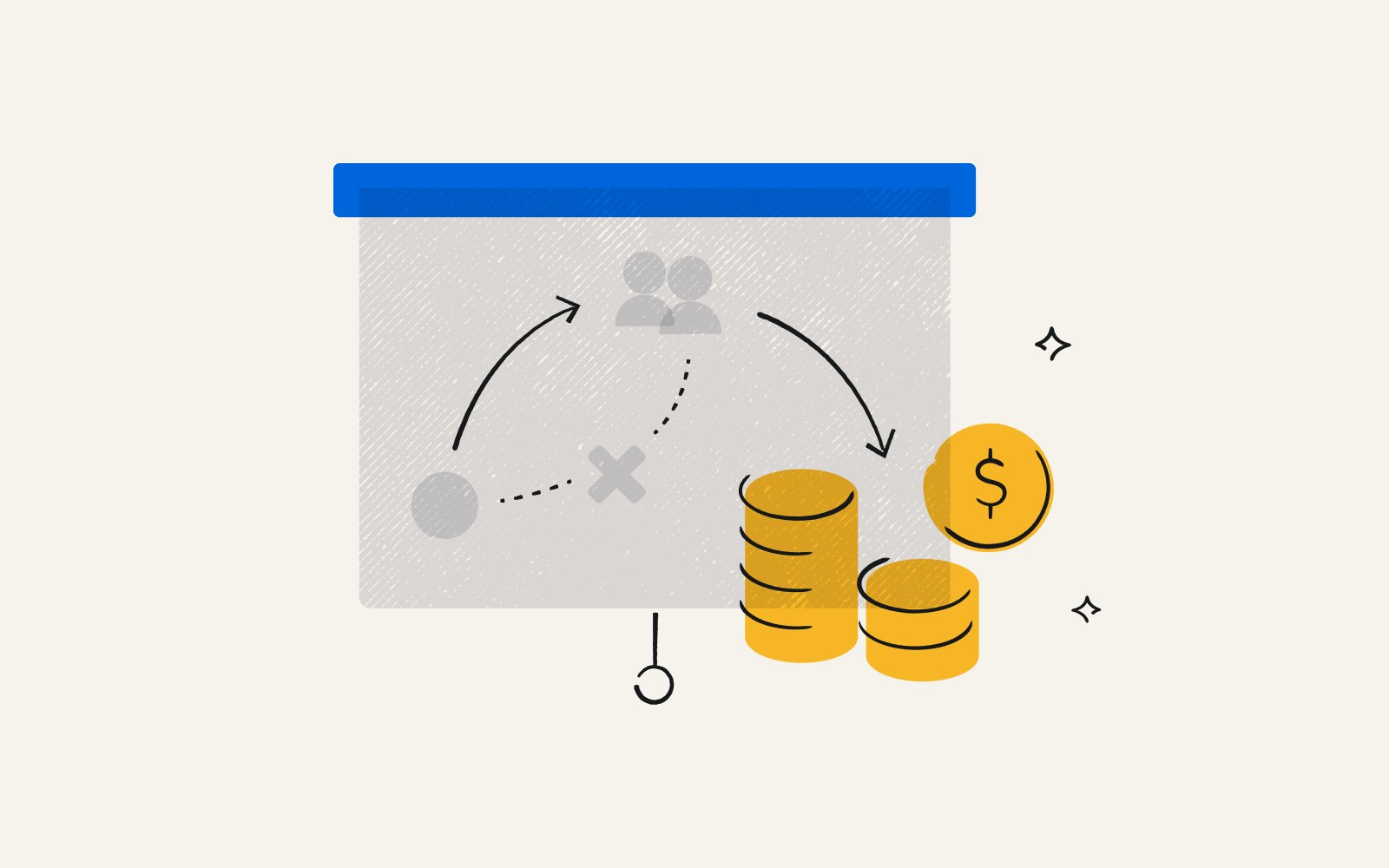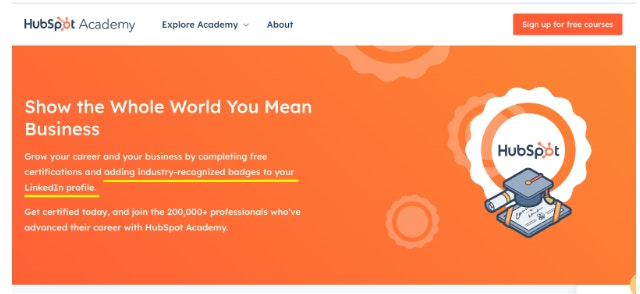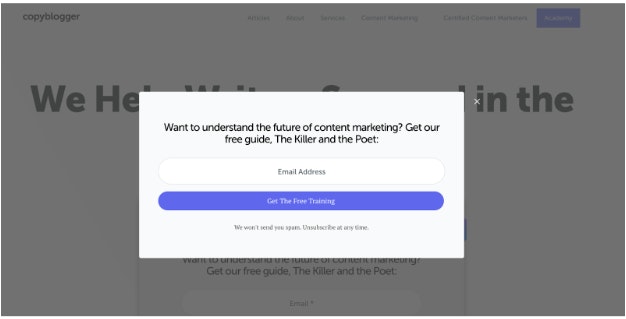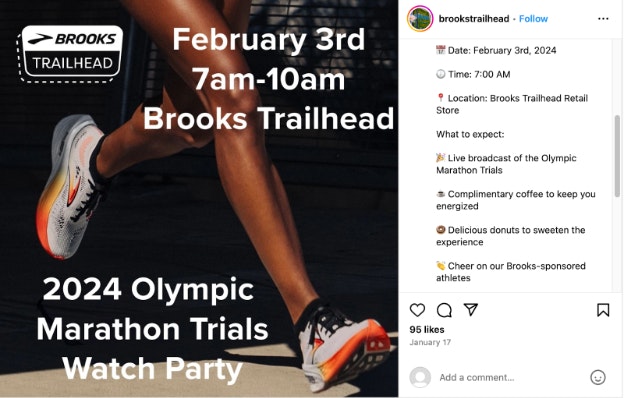Participation incentives: What they are and how to use them in marketing
By Amy Rigby●6 min. read●Jun 12, 2025

If your leads are stuck in the consideration stage, rewarding them for non-revenue-generating behaviors could unlock long-term sales growth. One company incentivized demos and yielded a 10:1 ROI over one year.
While sales promos are great for getting bottom-of-funnel (BoFu) prospects to buy faster, participation incentives meet mid-funnel (MoFu) prospects where they are. Plus, they get you one step closer to winning over loyal customers.
What is a participation incentive?
A participation incentive offers prospects a reward for completing an action other than buying. Incentives can include things like offering a digital gift card to website visitors who sign up for a sales demo, or giving a branded tote bag to people who visit your company’s booth at a conference.
For example, in February 2025, B2B auto repair technology company Repair OnDemand offered a $50 gift card to prospects who booked a virtual demo after the NADA tradeshow for people who weren’t able to stop by their booth onsite. This incentive rewards relevant buyers for taking time to explore a new solution, even if they may not be ready to buy immediately.
How can you use participation incentives in marketing?
Use participation incentives when prospects are in the middle of the funnel, also known as the consideration stage. It’s different from the earlier awareness stage: by this point, prospects are aware of their problem and how your product can help, but they’re not ready to buy. They’re still comparing your product against other possible solutions (ahem, your competitors).
In incentive marketing, the goal of a participation incentive differs from a sales promotion in that the latter coaxes customers into making a purchase. Offering discounts and rebates makes sense when a prospect is already strongly interested in buying from you and just needs a nudge.
However, participation incentives do not push for a sale. Instead, they encourage leads to take at least one more action (watch a webinar, attend an event, etc.) before you vie for the sale.
There are many ways to use participation incentives in your marketing strategy. This article focuses on how to use them to get people to take a demo or attend an event.
Are participation incentives effective?
Recent studies have shown that providing incentives boosts participation rates in things like user research, academic research, and clinical research. For example, User Research’s 2024 UX Research Incentives Report found that, across ~20,000 moderated projects, no-show rates fell as incentives rose. For remote B2C studies, the no-show rate dropped from 10 % at $60 an hour to less than 5 % at $150 an hour.
The same concept applies to B2B or B2C marketing.
Participation incentives, by and large, trigger the prospect’s sense of reciprocity and leverage positive reinforcement to drive action:
Positive reinforcement is when you reward participants for performing desired behaviors in the hopes that they’ll repeat those behaviors. Loyalty programs, for example, use positive reinforcement (exclusive discounts, cashback, and points) to encourage repeat purchases.
The principle of reciprocity describes the phenomenon where humans feel compelled to return the favor. An example of this in business is when a vendor hands out free samples to visitors, which makes them feel obliged to buy something in exchange.
You’re offering the prospect something they want, so they’re more likely to do something for you in return. And because they’re being rewarded for engaging with your brand, they’re more likely to engage with your brand again in the future.
Types of participation incentives (and examples)
Monetary incentives
Monetary incentives include cash, rebates, gift cards, and vouchers. Our research has shown that when it comes to rewards, people prefer money.
When you’re offering participation incentives at scale, steer clear of the logistical headaches of physical gift cards. Instead, provide digital incentives to ensure you can send money quickly and easily to prospects no matter where they are.
Monetary participation incentive example: “Take a demo and receive a $25 Visa prepaid card.”
Need to gather more leads to send to your sales team?
Participation incentives such as gift cards can sway prospects to take a demo. But to prevent people from signing up just to get the cash, promote this incentive only to highly relevant target audiences.
That’s how marketing software company Metadata delivered 230% more demos in one month with 60% less budget. The company offered a $100 DoorDash gift card to anyone who took a demo of its product.
As Mark Huber writes for the Metadata blog, "Since we’d be shouldering the cost of the LinkedIn campaign and the gift card, we needed to make sure the target audience was tight as a drum.”
To do this, he narrowed his target audience in the ad dashboard to about 19,000 people in specific industries and company sizes.
A month later, Huber’s team executed its highest number of demos ever, all while spending less than it had in the previous month.
Non-monetary incentives
Non-monetary incentives include:
Swag: Giving away branded mugs, pens, and hats is one way to incentivize visitors to visit your booth, talk to a sales rep, or sign up for your newsletter.
Recognition: Offering certifications, badges, or other forms of recognition can be highly motivating, too. For example, HubSpot gives a LinkedIn badge to anyone who completes a free HubSpot Academy course.

Learning opportunities: Many websites use lead magnets, such as free ebooks or whitepapers, to motivate website visitors to enter their email addresses.
Here’s an example from Copyblogger:

Non-monetary participation incentive example: “Attend our event and get free coffee and donuts.”
For a B2C example, we turn to Brooks. The Seattle-based running shoe company hosted a 2024 Olympic Marathon Trials watch party in its flagship store, complete with complimentary coffee, LaCroix, and donuts.

There was no cover charge to attend the event, so what did Brooks have to gain by offering free snacks and beverages? Hosting a running-related watch party was a great way to attract highly qualified foot traffic to its only retail store.
It also meant they had a captive audience. During commercial breaks, store employees promoted the Brooks shoes that some of the race participants were wearing.
The watch party was a fun way to entice new customers by reaching people who were already interested in running. It helped build brand awareness so that the next time attendees needed a pair of shoes, they’d think of Brooks.
Warm up those leads with participation incentives
Creating loyal customers is always at the top of a marketer’s mind. But let’s not neglect the many touchpoints to get there.
Discounts, rebates, and buy-one-get-one-free offers make sense when you’re dealing with BoFu customers who already have a strong desire to buy your product.
But for MoFu customers, prioritize participation in demos, webinars, or events to get them more familiar with your product’s benefits before you try to close the sale.
To successfully add participation incentives to your marketing strategy, take these steps:
Experiment with monetary and non-monetary incentives. While money is a strong motivator, non-monetary incentives might be the way to go if you have a limited budget. A/B test both and check the metrics to see which one is more effective for your target audience.
When offering monetary incentives like gift cards, be choosy about who you target. To avoid getting taken advantage of by people who just want the cash but have no interest in your product, use paid ads or email list segmentation. That way, you can target only the mid-funnel prospects you’ve identified as likely customers.
Digital gift cards ensure instant, easy delivery at scale. If you go the gift card route, avoid the extra expense of postage and other fees and use a digital gift card platform. Not only will it simplify ordering and sending, but top vendors also give recipients their choice of gift card so everyone gets a reward meaningful to them.


